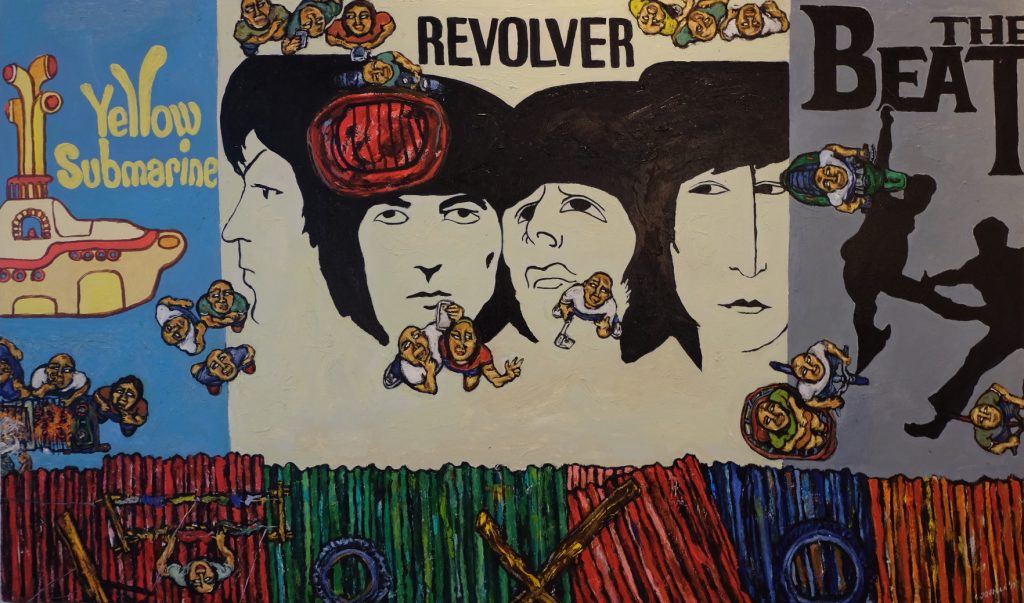TOP-HANG
Dansoy Coquilla
May 7- May 19, 2017

As Above, So Below
For almost a quarter of a century, Daniel “Dansoy” Coquilla underscores the power relations between those on top and those from below, those who look down and those who look up, those who surveil and those who are surveilled in his 24th solo show, Top-Hang, organized by Art Verité. As an English word, it doesn’t exist but the title does give an image of a figure precariously dangling from a hoisted support about to buckle—a kind of wordplay and motif that Coquilla has likewise explored in his previous exhibitions. While “top-hang” sounds curiously like tokhang (also not an actual word but a portmanteau of the Visayan words toktok and hangyo, which respectively mean “knock” and “plead”), a term that has recently gained sinister associations with the spate of extrajudicial killings, Coquilla states that this show is more of a sustained investigation into the social imbalances that characterize the status quo.
Capturing scenes from the life of the mostly poor, Coquilla’s paintings depict men and women as though caught in the moment of just having looked up, stopping whatever it is they are doing, and gazing at something that is transpiring from above or, perhaps, at somebody looking at them. At the crux of self-consciousness, they are framed within the frenetic colors and hectic textures of their day-to-day existence. These are not featureless spaces of the melancholic metro but inventively named locations brimming with activity: Basahan Lane, Anik-Anik Express, Brgy. Beatles. With most of the works showing them in the collective, the people unite in the singular activity of looking up, their gaze achieving a disturbing, penetrating quality: they will not be shamed into looking away.
Just like the best of Social Realism, Coquilla has invented his own visual vocabulary to create unforgettable representations of the marginalized. Usually bald, thick-lipped, and ironically wall-eyed, these are the people that traffic in the subtly expressionistic worlds of Coquilla’s canvases. Departing from the didacticism of what we usually consider as “social art,” Coquilla’s works are imbued with humor, references to pop culture, a wild palette, and generous doses of irony. While they may be evidently poor, his figures are not saddled with soul-crushing poverty but go on with life with dignity, even a sense of uplift.
As important as the depicted figures would be putative presence to which they direct their unflagging gaze. It could be many things: a meteorological event, an airborne catastrophe, a closed-circuit television, a low-flying aircraft, the viewer, God. Whatever it may be, it establishes a dialectical relationship with the crowd, bracketing a situation in which they have to negotiate their respective agencies and set weights on an equally invisible scale. This may be the scale of social justice, or something more existential but no less pernicious. Ambiguous this relationship may be, the awareness of being looked at—and at the same time confronting the gaze—is transforming and, just like the figures in Coquilla’s durable and enduring paintings, we shall, after seeing these works, join the sound and fury of the world ignited by a radical witnessing.
—Carlomar Arcangel Daoana